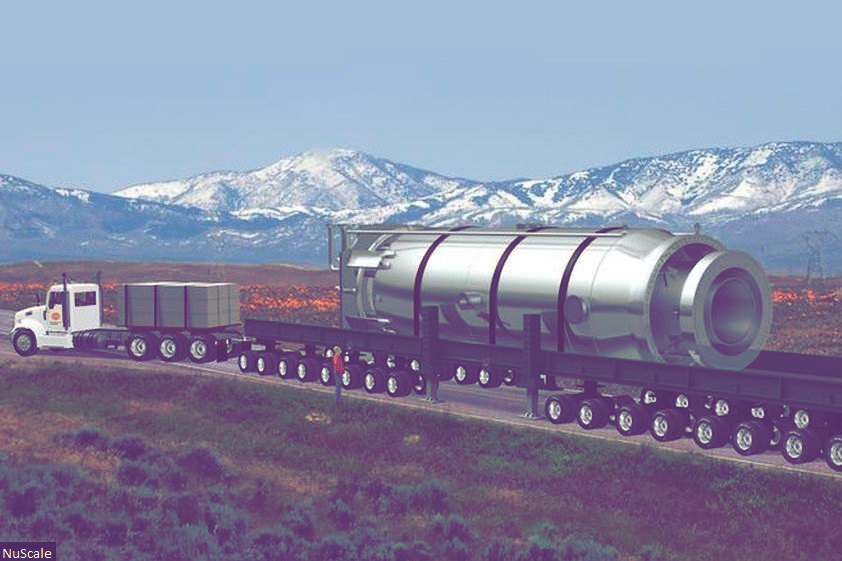In terms of the great world challenge of trying to mitigate global warming, the use of renewable energies like wind energy and solar power is something that will be unquestionable; but a technology to back up those types of energy is necessary for when weather conditions prevent energy generation by those renewable sources. To that end, small modular nuclear reactors (SMRs) may play a decisive role.
What are small modular reactors (SMRs)?
SMRs are a type of nuclear fission reactor of a smaller size and power than that of conventional reactors. They are inherently safe and based on passive safety systems. These reactors are manufactured in a factory and subsequently transported to a site for their assembly and start-up; thus, the production chain is competitive and start-up times are significantly lower.
Due to their small size and reduced environmental footprint, SMRs are especially suitable to replace fossil-fuel power plants in the future, like gas- and coal-based plants that emit greenhouse gases.
There are currently around 50 designs for SMRs that range from scaled-down versions of existing nuclear reactors to Generation IV designs that are totally new. Argentina, China, and Russia are famous for being the most advanced in terms of SMR construction. You can compare SMRs on the global level at this link.
Why could SMRs be the future of nuclear energy?
SMRs could be particularly useful in remote areas where it is very expensive to generate energy with other technologies and, additionally, there exists a dependence on diesel fuel. Likewise, SMRs can work with nuclear fuel, which allows for longer operation cycles, and this is a decisive factor in remote areas where accessibility can be a problem.
SMRs are more flexible, as they do not necessarily have to be connected to a large electrical grid. Additionally, these reactors are normally scalable; for example, several modules can be connected if necessary to achieve the desired power output. What’s more, SMRs have a design that allows for generated power to follow demand, constantly adapting thereto and, thus, SMRs are the perfect allies to mass renewable energy implementation.
SMRs have also been proposed as a way to optimize the financial risks assumed by companies who decide to invest in nuclear energy. The overnight costs of these plants are much less than those of a large-scale reactor and, additionally, investors can benefit from the economies of scale involved.
These reactors, just like their “big brothers,” also need inspections, reviews, maintenance and staff training for safe operation. To that end, training simulators play a fundamental role and contribute to operational efficiency.
How do simulators help with SMRs?
A simulator allows staff to become familiar with reactor design, operation under normal conditions, and operation under abnormal conditions (for example, accident evolution and mitigation) to improve efficiency and safety in relationship with SMRs.
At Tecnatom, we have been offering our simulation solutions to the nuclear sector worldwide for years and, more specifically, we have vast experience with SMRs. One of our most noteworthy experiences has been our development, for the International Atomic Energy Agency (IAEA), of a simulator of the basic principles of a generic integrated pressurized water (iPWR) small modular reactor.
An iPWR SMR basically consists of a pressurized water reactor with a power rating of 45 MWe, without primary loops and with the steam generators and the pressurizer integrated in the vessel’s structure. The scope of the simulator we developed includes the water-steam cycle for steam generation (150 MWt), the safety and accident mitigation systems, as well as containment aspects.
SMRs will play a fundamental role in the energy transition and, therefore, it will be important for them to be operated safely and efficiently. Thus, training simulators will be greatly useful.







